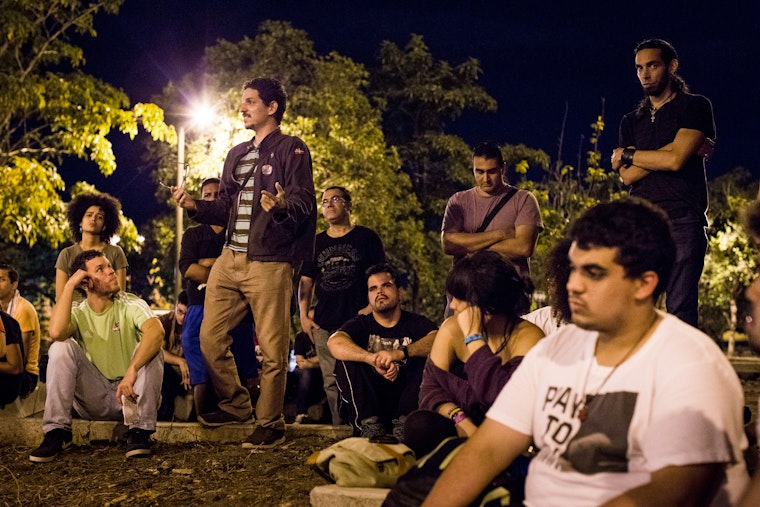Students in Puerto Rico Defend Their Right to Affordable Education
By Karina Claudio Betancourt

Editor’s Note (May 31, 2016): This post did not properly attribute a report published by the Hedge Clippers. You can read the report in full at the Hedge Clippers website.
When I attended the University of Puerto Rico from 2002 to 2007, we were going through a severe crisis. I was involved with the theater and creative writing departments, and our theater had been “closed for renovations” for almost a decade. Our library had lost many of its books to a flood caused by a hurricane, and many of the books I needed for my research had been ruined and never replaced. The computer lab barely had any working computers. And the classrooms I attended daily were full of mold and asbestos.
Yet for the university’s centennial celebration in 2003, the then president decided to spend thousands of dollars throwing a lavish party in the main plaza of the Rio Piedras campus. I joined a group of students who protested the decision by by organizing a comparsa, a theatrical march that cut through the event and led people to the closed theater. That evening we took over the empty theater and staged an impromptu play about the crisis. Half an hour later, we were kicked out with tear gas and other abusive police tactics.
Thirteen years and two student strikes later, the students at the University of Puerto Rico are still struggling. They are also still the ones holding the Puerto Rican and U.S. governments accountable.
On March 15, the students held an assembly—the largest in the university’s history, with close to 3,500 participants—and shut down the university to start crafting their demands.
Among these demands were that the government return the $55 million that it has cut from the university to pay its general obligation bonds in the past five years; that the president, who earns a $150,000 salary, resign; and that learning conditions improve, with more professors, more class availability, and less-crowded classrooms.
I traveled to Puerto Rico on the first day of the shutdown and found students and professors standing in solidarity, speaking out about how the country’s current economic crisis is affecting their day-to-day lives. From higher rents to more expensive groceries, rising prices mean that both students and professors are struggling to make ends meet. They are forced to choose between shelter or food. Some have gone months without receiving a paycheck.
This is the reality for working-class Puerto Ricans across the island—and it’s bound to get worse as the government heads for an inevitable default on its May debt payment of over $400 million and its July payment of over $2 billion.
This crisis has been years in the making. It is the result of years of inconsistent U.S. policies towards the island and a two-party system that favors cronyism over the people’s well-being. The government has amassed $72 billion in debt and, to pay back its creditors, has resorted to extreme measures, including delaying tax refunds to its citizens, increasing its sales tax by more than 50 percent, and instituting massive cuts to education, health care, and social services.
The crisis is driving more Puerto Ricans to the mainland, fueling an ongoing “population swap” in which unemployed, young Puerto Ricans leave the island in search of work, while hundreds of wealthy Americans move in to take advantage of policies that allow them to use it as a tax haven. Indeed, 10 percent of the island’s population has left in the last 10 years, and today as many as 3,000 Puerto Ricans are fleeing each week. This massive depopulation has eroded the availability of services and shrunk the island’s tax base, which the government relies on to pay for pensions, services, and its debt.
In pushing back against the resulting austerity measures, students have been the most organized. Their shutdown included all 11 campuses of the University of Puerto Rico, and will likely result in a prolonged student strike, similar to the one in 2010.
Whether the government will respond to their demands or continue to prioritize debt over people remains an open question. The citizens’ fate also lies with the U.S. Congress, which has the power to restructure Puerto Rico’s debt.
As these policies are coming together in Washington, D.C., on the island, the students will continue to defend their right to an affordable education. They are hoping that the government will listen to their demands, and that Congress will act in a way that respects the autonomy of Puerto Rican residents—who, after all, are 3.5 million U.S. citizens and deserve to be treated with respect and dignity.
Karina Claudio Betancourt is project director for Open Society’s Puerto Rico Project.